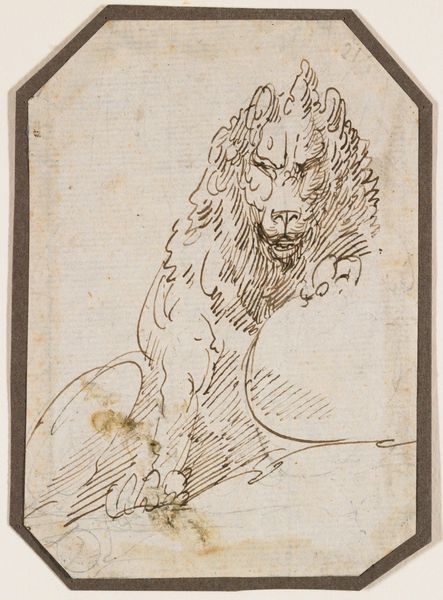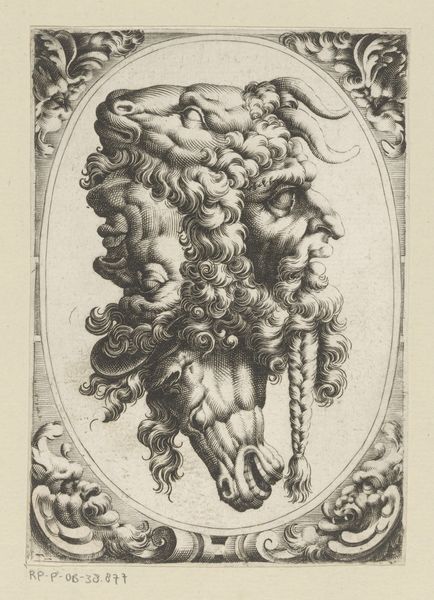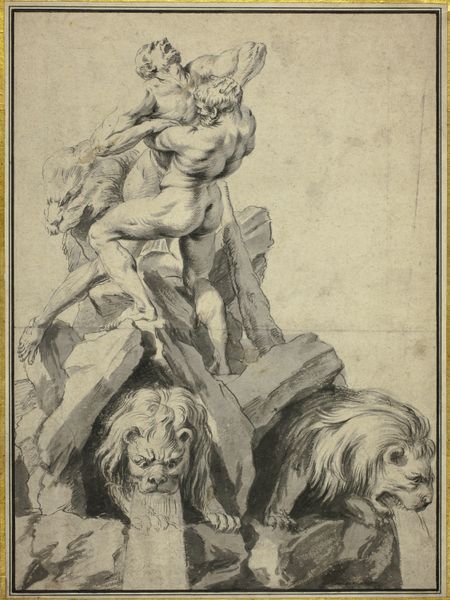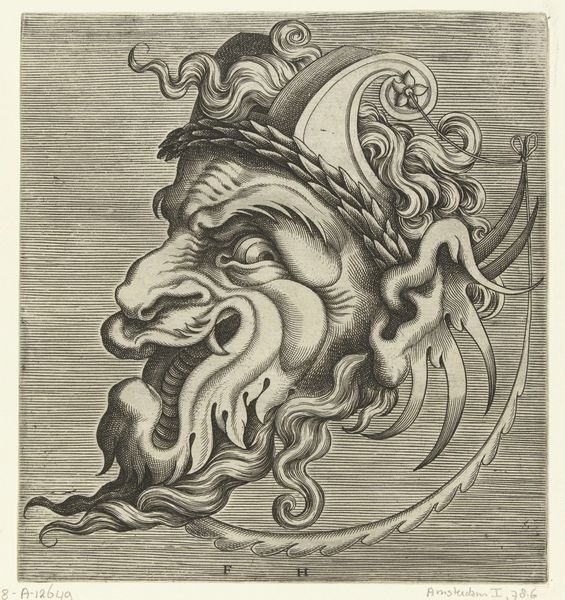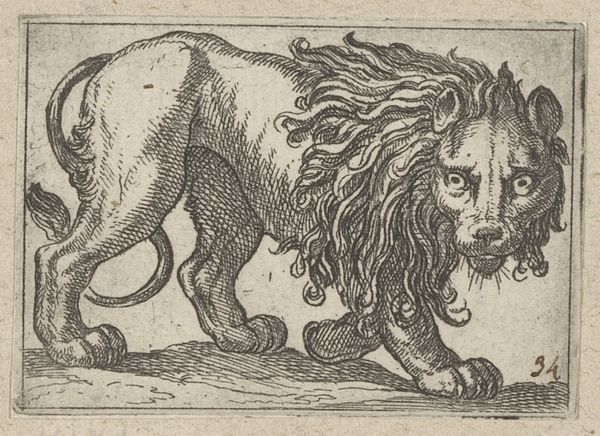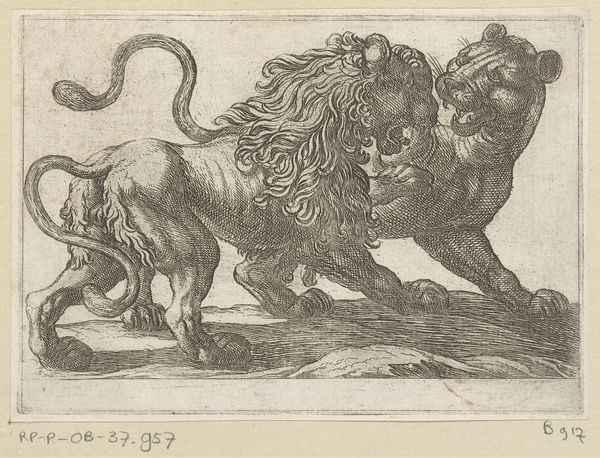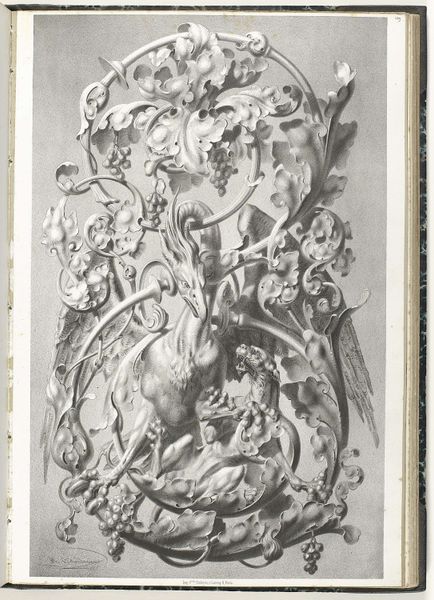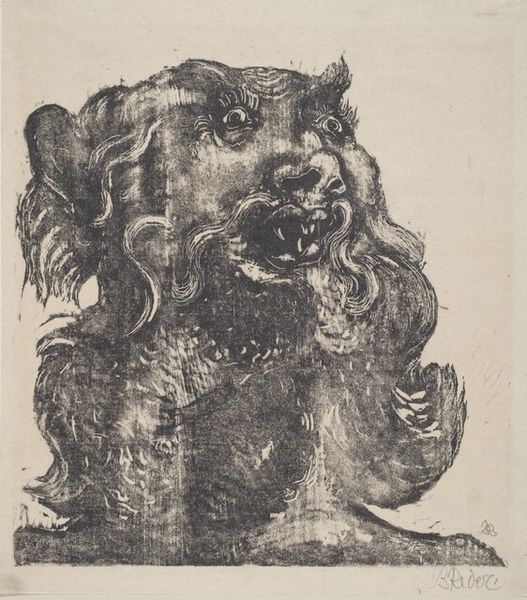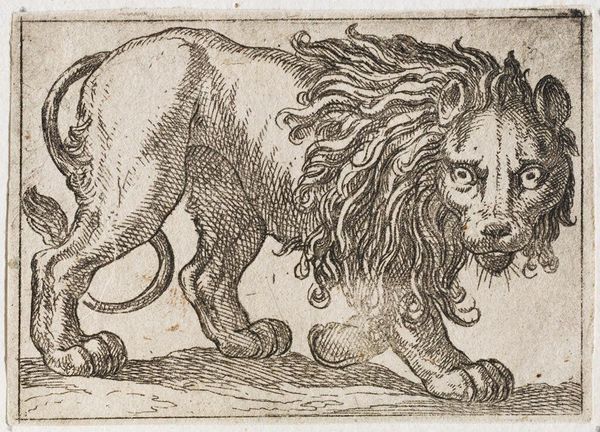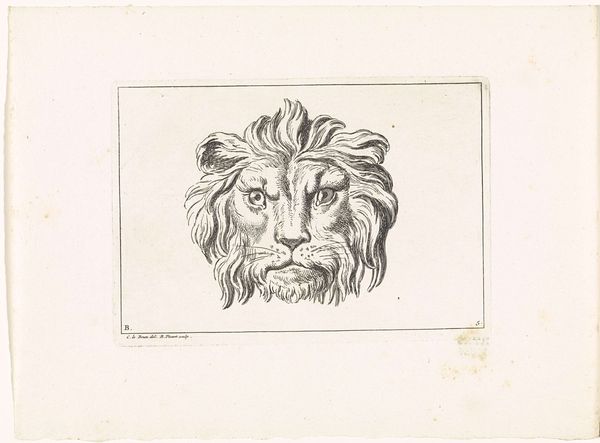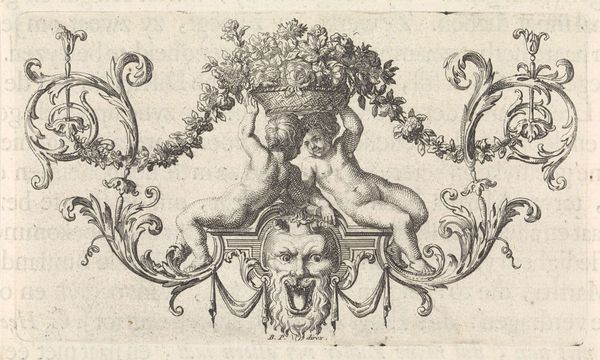
drawing, paper, ink
portrait
drawing
figuration
paper
form
11_renaissance
ink
Dimensions: 123 mm (height) x 74 mm (width) (bladmaal)
Curator: Looking at this artwork, "Hoved af en gedebuk" ("Head of a Goat"), an ink drawing on paper created between 1539 and 1584 by Tobias Stimmer, my immediate reaction is a feeling of intense animalistic power restrained by delicate lines. Editor: There’s an immediacy to the making that's appealing, like we’re witnessing the artist figuring out form through careful delineation. What can you tell us about its materiality and the techniques used? Curator: Well, Stimmer worked during a tumultuous period in Europe marked by the Reformation. Representations of animals often carried symbolic weight, and within a religious context the goat could symbolize several things – lust, sacrifice, even the scapegoat, but more broadly also ideas related to social and religious outcasts or marginalized communities. It really depends on the interpretation that best resonates with one's own background and lived experience. Editor: Yes, and to add, the medium itself - ink on paper – points to the possibilities of accessibility. This wasn't oil paint and canvas, meant for elite patrons, but rather an accessible medium suggesting the broader reach of artistic practices at that time. Was it a study for a larger work perhaps? Or perhaps it relates to Stimmer’s involvement with illustrating books? Curator: It’s difficult to say definitively, although its placement at the Statens Museum for Kunst definitely places this in a Western "high art" historical tradition. Considering Stimmer's background in printed images and his humanist interests, it likely draws from various intellectual spheres and classical influences prevalent at the time, although we shouldn't discount the artistic value that we might assign such an image today in terms of our contemporary value systems, which also affect how this work is interpreted in an art historical sense. Editor: The strokes, though precise, convey movement and texture, which for me brings the animal alive despite its rather static pose. Curator: Exactly. It also brings forward important discussions about societal representations of animals, reflecting and perpetuating our complex relationship with the non-human world. What power do we give those images? Editor: Absolutely. It prompts considerations of labor, class, and access in artistic production. I'm finding myself really caught by the social contexts hinted at within this striking artwork. Curator: And the questions it raises regarding representations of the marginalized and misunderstood, making this simple sketch a focal point for critical conversation.
Comments
No comments
Be the first to comment and join the conversation on the ultimate creative platform.
